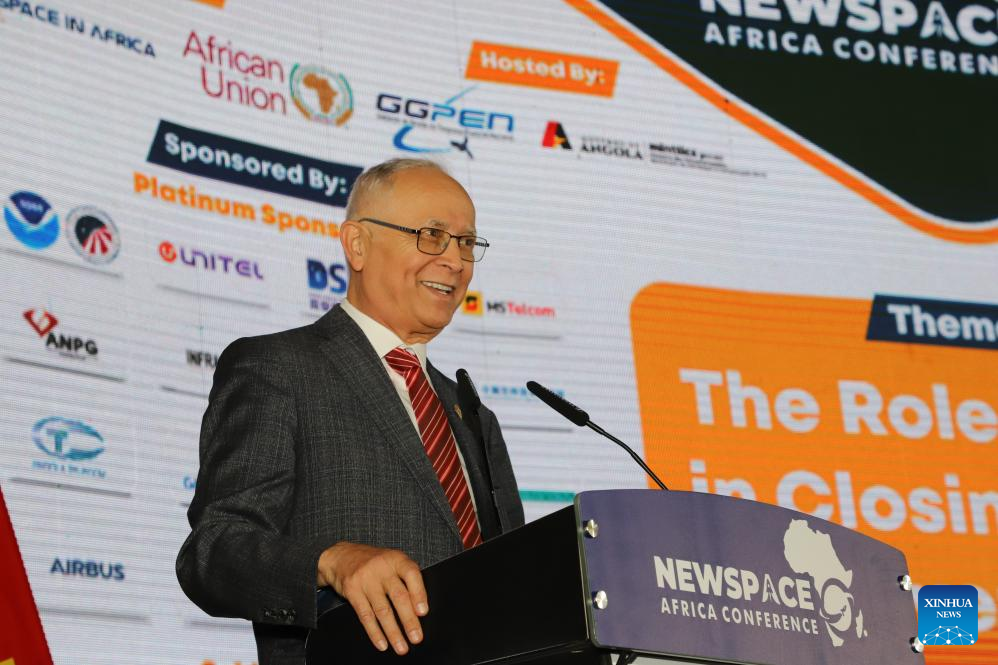Interview: Africa moves to use space technology to aid development
Interview: Africa moves to use space technology to aid development Xinhua


Africa to Establish African Space Agency to Aid Sustainable Development

Introduction
The African Union (AU) Commissioner for Education, Science, Technology and Innovation, Mohammed Belhocine, announced in a recent interview that Africa will soon establish the African Space Agency (AfSA) with the aim of utilizing space technology to support African development.
Establishment of AfSA
Belhocine stated that the AU space policy mandates the creation of an African space agency. Significant progress has been made in the past year and this year to ensure the establishment of the AfSA. Member states have decided that the agency will be based in Cairo, Egypt. The preparations for the establishment of AfSA are 90 percent complete, with an approved organizational structure. The African Space Council, consisting of 10 members from the five African regions, will coordinate AfSA activities and guide continental space policy and resource allocation.
Progress and Benefits
Although the AfSA is not yet fully operational, rapid progress is being made. Belhocine mentioned that it will take a few more months to be officially established, with some recruitment tasks still pending. Technological advancements have made the benefits of space technology evident in areas such as Earth observation, navigation, and connectivity. The decreasing cost of satellites due to miniaturization has sparked growing interest in space science and technology in African countries. More countries are investing in space through bilateral agreements, and it is expected that the establishment of AfSA will further increase this interest.
Sustainable Development Goals
The main principle of African space policy is the peaceful use of space resources. Belhocine highlighted the potential of space technology to contribute to sustainable development in Africa. Various applications, including security, food security, navigation, connectivity, and early warning systems for disasters, can benefit from satellite-based Earth observation. Access to this information is becoming more affordable, leading to increased investment in this field.
NewSpace Africa Conference 2024
The NewSpace Africa Conference 2024, held in Luanda, Angola’s capital, concluded on Friday. The event brought together 400 delegates, including representatives from space agencies, officials from more than 24 African countries, and 28 prominent institutions or companies from the global space industry.
International Cooperation
Belhocine acknowledged the importance of international cooperation in the satellite industry in African countries. Major global players like China are crucial partners for African countries in this field. He specifically mentioned the AU’s “very good relationship and cooperation” with China in education, science, technology, and aerospace. Both sides are preparing a memorandum of understanding to enhance exchanges and collaboration at the African Union level, with hopes for future space cooperation.
■
SDGs, Targets, and Indicators
-
SDG 4: Quality Education
- Target 4.1: By 2030, ensure that all girls and boys complete free, equitable, and quality primary and secondary education leading to relevant and effective learning outcomes.
- Indicator 4.1.1: Proportion of children and young people (a) in grades 2/3; (b) at the end of primary; and (c) at the end of lower secondary achieving at least a minimum proficiency level in (i) reading and (ii) mathematics, by sex.
-
SDG 9: Industry, Innovation, and Infrastructure
- Target 9.5: Enhance scientific research, upgrade the technological capabilities of industrial sectors in all countries, in particular developing countries, including, by 2030, encouraging innovation and substantially increasing the number of research and development workers per 1 million people and public and private research and development spending.
- Indicator 9.5.1: Research and development expenditure as a proportion of GDP.
-
SDG 17: Partnerships for the Goals
- Target 17.6: Enhance North-South, South-South, and triangular regional and international cooperation on and access to science, technology, and innovation and enhance knowledge sharing on mutually agreed terms, including through improved coordination among existing mechanisms, particularly at the United Nations level, and through a global technology facilitation mechanism.
- Indicator 17.6.1: Number of science and/or technology cooperation agreements and programmes between countries, by type of cooperation.
Analysis
The article highlights the establishment of the African Space Agency (AfSA) and its potential to aid African development through space technology. Based on the content, the following SDGs, targets, and indicators can be identified:
SDG 4: Quality Education
The establishment of the AfSA can contribute to quality education by providing opportunities for learning and research in the field of space science and technology. This aligns with Target 4.1, which aims to ensure that all girls and boys complete free, equitable, and quality primary and secondary education leading to relevant and effective learning outcomes. The article mentions that interest in space science and technology in African countries is growing stronger, indicating a potential increase in educational opportunities in this field.
SDG 9: Industry, Innovation, and Infrastructure
The establishment of the AfSA also relates to SDG 9, which focuses on industry, innovation, and infrastructure. Target 9.5 aims to enhance scientific research and technological capabilities, particularly in developing countries. The article mentions that the miniaturization of satellites has reduced their cost, making space technology more accessible. This indicates progress towards enhancing technological capabilities in the African space industry. Indicator 9.5.1, which measures research and development expenditure as a proportion of GDP, can be used to track progress in this area.
SDG 17: Partnerships for the Goals
The article highlights international cooperation in the field of space technology, particularly with China. This aligns with SDG 17, which focuses on partnerships for the goals. Target 17.6 aims to enhance North-South, South-South, and triangular regional and international cooperation on science, technology, and innovation. The article mentions that the African Union (AU) has a “very good relationship and cooperation” with China in education, science, technology, and aerospace. Indicator 17.6.1, which measures the number of science and/or technology cooperation agreements and programs between countries, can be used to measure progress in this area.
Table: SDGs, Targets, and Indicators
| SDGs | Targets | Indicators |
|---|---|---|
| SDG 4: Quality Education | Target 4.1: By 2030, ensure that all girls and boys complete free, equitable, and quality primary and secondary education leading to relevant and effective learning outcomes. | Indicator 4.1.1: Proportion of children and young people (a) in grades 2/3; (b) at the end of primary; and (c) at the end of lower secondary achieving at least a minimum proficiency level in (i) reading and (ii) mathematics, by sex. |
| SDG 9: Industry, Innovation, and Infrastructure | Target 9.5: Enhance scientific research, upgrade the technological capabilities of industrial sectors in all countries, in particular developing countries, including, by 2030, encouraging innovation and substantially increasing the number of research and development workers per 1 million people and public and private research and development spending. | Indicator 9.5.1: Research and development expenditure as a proportion of GDP. |
| SDG 17: Partnerships for the Goals | Target 17.6: Enhance North-South, South-South, and triangular regional and international cooperation on and access to science, technology, and innovation and enhance knowledge sharing on mutually agreed terms, including through improved coordination among existing mechanisms, particularly at the United Nations level, and through a global technology facilitation mechanism. | Indicator 17.6.1: Number of science and/or technology cooperation agreements and programmes between countries, by type of cooperation. |
Behold! This splendid article springs forth from the wellspring of knowledge, shaped by a wondrous proprietary AI technology that delved into a vast ocean of data, illuminating the path towards the Sustainable Development Goals. Remember that all rights are reserved by SDG Investors LLC, empowering us to champion progress together.
Source: english.news.cn

Join us, as fellow seekers of change, on a transformative journey at https://sdgtalks.ai/welcome, where you can become a member and actively contribute to shaping a brighter future.







